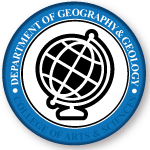Author ORCID Identifier
Deuerling - https://orcid.org/0000-0001-8825-0546
Document Type
Article
Publication Date
8-21-2014
Publication Title
Chemical Geology
Volume
386
First Page
152
Last Page
164
Abstract
The geochemistry of boron was investigated in the ice-covered lakes and glacier meltwater streams within Taylor and Wright Valley of the McMurdo Dry Valleys (MCM), Antarctica, in order to achieve a greater understanding of the source of boron to these aquatic systems and how in-lake processes control boron concentration. Selected lake depths (surface and bottom water) and streams were analyzed for boron geochemistry. Boron stable isotope values in these waters span the range of + 12.3‰ to + 51.4‰, which corresponds to the variations from glacier meltwater streams to the hypolimnion of a highly evaporated hypersaline lake. The data demonstrate that the major sources of B to the aquatic system are via terrestrial chemical weathering of aluminosilicates within the stream channels, and a marine source, either currently being introduced by marine-derived aerosols or in the form of ancient seawater. Lakes Fryxell, Hoare, and upper waters of Lake Joyce, which experience more terrestrial influence of aluminosilicate chemical weathering via glacial meltwater streams, display a mixture of these two major sources, while the source of B in the bottom waters of Lake Joyce appears to be primarily of marine origin. Lakes Bonney and Vanda and the Blood Falls brine have a marine-like source whose δ11B values have become more positive by mineral precipitation and/or adsorption. Don Juan Pond displays a terrestrial aluminosilicate influence of a marine-like source. These hypersaline lake waters from Antarctica are similar in δ11B to other hypersaline lake waters globally, suggesting that similar processes control their B geochemistry.
Recommended Citation
Leslie D, Lyons WB, Warner N, Vengosh A, Olesik J, Welch KA, Deuerling KM (2014) Boron isotopic geochemistry of the McMurdo Dry Valleys lakes, Antarctica. Chemical Geology: 385, 152-164. doi: 10.1016/j.chemgeo.2014.08.016
Creative Commons License

This work is licensed under a Creative Commons Attribution-Noncommercial-No Derivative Works 4.0 License.


Comments
This is an Accepted Manuscript of an article published by Elsevier in Chemical Geology on [August 21, 2014], available online: https://doi.org/10.1016/j.chemgeo.2014.08.016